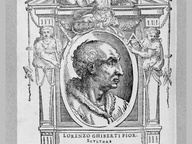Giardini Reali
Centro

- Address: Piazzetta Reale 1
- Opening: Open from Tuesday to Sunday. Closed on Mondays.
From 19 March:
from Tuesday to Friday: from ore 9 to 17;
Saturday and Sunday, from 9 to 18.30
From April to June:
from Tuesday to Sunday and holidays: from 9 to 18.30
From July to 14 August: Summer opening times
From 15 August to 2 October:
from Tuesday to Friday: from ore 10 to 18;
Saturday, Sunday and holidays: from 10 to 19.30
From 4 October:
from Tuesday to Friday: from ore 9 to 17;
Saturday, Sunday and holidays: from 9 to 18.30
November, December 2016 and January 2017: from Tuesday to Sunday and holidays: from 9 to 16
The Gardens are open on the following public holidays: January 1 (from 11 am) January 6, Easter and Easter Monday, Liberation Day (April 25), Labor Day (May 1), Feast of the Republic (June 2), Assumption’s Day (August 15), All Saints’ Day (November 1), Feast of the Immaculate Conception (December 8), December 26. The Gardens are open on St. Eusebius Day, Patron Saint of Venaria Reale (August 14). The Gardens are closed on December 25. - Price: Reggia + Gardens + Exhibitions: full rate €25, discounted €1 for aged 6 to 15 if accompanied by adults.
Reggia + Gardens: full rate €16, discounted €14, discounted €10 for aged 6 to 20, free entrance for kids under 6.
Gardens: full rate €5, discounted €4, discounted €2 for aged 6 to 20, free entrance for kids under 6.
For further information on special offers, discounted admission and ticketing please visit the web site or contact the information office. - Transportation: Stop 245 Garibaldi: lines 4, 7, 11, 27, 51, 57, Star 2.
Stops 471 and 472 Castello: lines 13, 13/, 15, 55, 56. - Services:


Right behind the Royal Palace are the Royal Gardens, originally wanted by Emmanuel Philibert Duke of Savoy (1528-1580) to give lustre to the seat of his power. Actually, this green area took shape between the late 1600s and the early 1700s thanks to the work of André Le Nôtre, a landscaping architect (who worked at the Court of Versailles) who moulded them on the French model. During the Napoleonic period they were embellished by statues and some marble vases. Today they feature playgrounds and, thanks to their very central position, in the summer they often host events and concerts.



